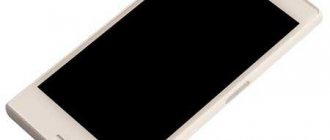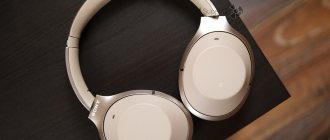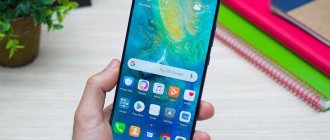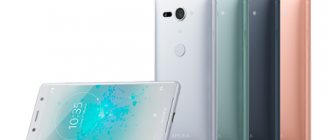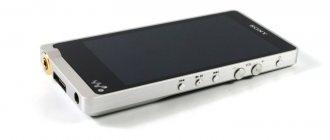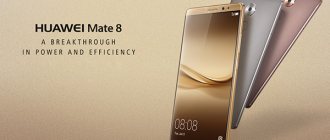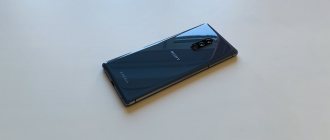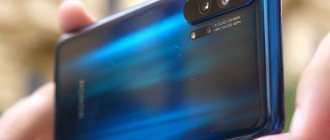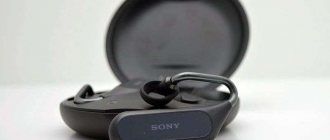Sales of the Xperia X and Xperia X Compact did not meet Sony's expectations - and we received a message that there will no longer be a “standard premium” from the Japanese corporation. It seemed that along with the X line, the story of the Compact version would also end - there were too few fans of small smartphones, and in an era when everyone began installing frameless 18:9 format displays in their devices, the relevance of models with a screen less than five inches had completely dropped to zero. But the inertia of decision-making in Japanese companies apparently still plays a decisive role - and the XZ1 Compact finally saw the light.
Moreover, in its concept, it repeats not even last year’s version, but what came before it - this is a full-fledged flagship with the most sophisticated platform (here – Snapdragon 835), but in a compact body. With dust and moisture protection and a 4.6-inch HD screen. Welcome to 2015. Is such a commitment to tradition justified in our turbulent times and has Sony forgotten how to make charming smartphones? That's what we'll talk about.
⇡#Technical characteristics
| Sony Xperia XZ1 Compact | Sony Xperia X Compact | Sony Xperia XZ1 | Honor 9 | Xiaomi Mi6 | |
| Display | 4.6 inches, IPS, 1280 × 720 pixels, 320 ppi, capacitive multi-touch | 4.6 inches, IPS, 1280 × 720 pixels, 320 ppi, capacitive multi-touch | 5.2 inches, IPS, 1920 × 1080, 424 ppi, capacitive multi-touch | 5.15 inches, IPS, 1920 × 1080 pixels, 423 ppi, capacitive multi-touch | 5.15 inches, IPS, 1920 × 1080 pixels, 428 ppi, capacitive multi-touch |
| Protective glass | Corning Gorilla Glass 5 | Corning Gorilla Glass (modification not specified) | Corning Gorilla Glass 5 | No information | Yes, manufacturer unknown |
| CPU | Qualcomm Snapdragon 835: Quad Kryo 2.45 GHz + Quad Kryo 1.9 GHz | Qualcomm Snapdragon 650: two ARM Cortex-A72 cores, 1.8 GHz + four ARM Cortex-A53 cores, 1.4 GHz | Qualcomm Snapdragon 835: Quad Kryo 2.45 GHz + Quad Kryo 1.9 GHz | HiSilicone Kirin 960: four ARM Cortex-A73 cores, 2.4 GHz + four ARM Cortex-A53 cores, 1.8 GHz | Qualcomm Snapdragon 835: Quad Kryo 2.45 GHz + Quad Kryo 1.9 GHz |
| Graphics controller | Adreno 540, 710 MHz | Adreno 510, 550 MHz | Adreno 540, 710 MHz | ARM Mali-G71 MP8, 850 MHz | Adreno 540, 710 MHz |
| RAM | 4 GB | 3 GB | 4 GB | 4 GB (6 GB version available) | 6 GB |
| Flash memory | 32 GB | 32 GB | 64 GB | 64 GB (there is a version with 128 GB) | 64/128 GB |
| Memory card support | Eat | Eat | Eat | Eat | No |
| Connectors | USB Type-C, 3.5 mm minijack | USB Type-C, 3.5 mm minijack | USB Type-C, 3.5 mm minijack | USB Type-C, 3.5 mm minijack | USB Type-C |
| SIM cards | One nano-SIM | One nano-SIM | Two nano-SIMs | Two nano-SIMs | Two nano-SIMs |
| Cellular connection 2G | GSM 850 / 900 / 1800 / 1900 MHz | GSM 850 / 900 / 1800 / 1900 MHz | GSM 850 / 900 / 1800 / 1900 MHz | GSM 850/900/1800/1900 MHz | GSM 850/900/1800/1900 MHz |
| Cellular 3G | DC-HSPA 800/850/900/1700/1900/2100 MHz | HSDPA 850 / 900 / 1700 / 1900 / 2100 MHz | DC-HSPA 850/900/1900/2100 MHz | HSDPA 850/900/1900/2100 | HSDPA 850/900/1900/2100 |
| Cellular 4G | LTE Cat.15 (up to 800 Mbps): bands 1, 2, 3, 4, 5, 7, 8, 12, 13, 17, 19, 20, 25, 26, 28, 29, 32, 38, 39 , 40, 41, 66 | LTE Cat. 6 (up to 300 Mbit/s): bands 1, 2, 3, 4, 5, 7, 8, 12, 17, 19, 20, 27, 28, 38, 39, 40, 41 | LTE Cat.16 (up to 1024 Mbps): bands 1, 3, 4, 5, 7, 8, 12, 17, 20, 28, 32, 38, 39, 40, 41 | LTE Cat. 6 (300/50 Mbit/s): bands 1, 3, 5, 7, 8, 20, 38, 40, 41 | LTE Cat. 16 (1000/150 Mbit/s): bands 1, 3, 5, 7, 8, 38, 39, 40, 41 |
| WiFi | 802.11a/b/g/n/ac, 2.4 and 5 GHz | 802.11a/b/g/n/ac, 2.4 and 5 GHz | 802.11a/b/g/n/ac, 2.4 and 5 GHz | 802.11a/b/g/n/ac | 802.11a/b/g/n/ac |
| Bluetooth | 5.0 | 4.2 | 5.0 | 4.2 | 5.0 |
| NFC | Eat | Eat | Eat | Eat | Eat |
| Navigation | GPS, A-GPS, GLONASS | GPS, A-GPS, GLONASS, BeiDou | GPS, A-GPS, GLONASS | GPS, A-GPS, GLONASS, BeiDou | GPS, A-GPS, GLONASS, BeiDou |
| Sensors | Illumination, proximity, accelerometer/gyroscope, magnetometer (digital compass) | Illumination, proximity, accelerometer/gyroscope, magnetometer (digital compass), barometer, color spectrum sensor | Illumination, proximity, accelerometer/gyroscope, magnetometer (digital compass) | Light, proximity, accelerometer/gyroscope, magnetometer (digital compass), IR sensor | Light, proximity, accelerometer/gyroscope, magnetometer (digital compass), barometer, IR sensor |
| Fingerprint's scanner | Eat | Eat | Eat | Eat | Eat |
| Main camera | 19 MP, ƒ/2.0, optical stabilization, laser autofocus, LED flash, 4K video recording | 23 MP, ƒ/2.0, predictive hybrid autofocus, LED flash, 4K video recording | 19 MP, ƒ/2.0, optical stabilization, laser autofocus, LED flash, 4K video recording | Dual module, 20 + 12 MP, ƒ/2.2, hybrid autofocus, dual LED flash | Dual module, 12 MP: 27 mm, ƒ/1.8 + 52 mm, ƒ/2.6 (2x zoom); Optical stabilizer operates at wide angles; phase detection autofocus, dual LED flash |
| Front-camera | 8 MP, ƒ/2.4, fixed focus, no flash | 5 MP, fixed focus | 13 MP, ƒ/2.0, contrast autofocus, no flash | 8 MP, ƒ/2.4, fixed focus | 8 MP, fixed focus |
| Nutrition | Non-removable 10.26 Wh battery (2700 mAh, 3.8 V) | Non-removable 10.26 Wh battery (2700 mAh, 3.8 V) | Non-removable 10.26 Wh battery (2700 mAh, 3.8 V) | Non-removable battery 12.16 Wh (3200 mAh, 3.8 V) | Non-removable 12.73 Wh battery (3350 mAh, 3.8 V) |
| Size | 129 × 65 × 9.3 mm | 129 × 65 × 9.5 mm | 148 × 73 × 7.4 mm | 147.3 × 70.9 × 7.45 mm | 145.2 × 70.5 × 7.45 mm |
| Weight | 143 grams | 135 grams | 156 grams | 155 grams | 168/182 grams (regular/ceramic version) |
| Housing protection | IP65/68 | No | IP65/68 | No | Splash protection |
| operating system | Android 8.0 Oreo, Sony Xperia shell | Android 6.0 Marshmallow, Sony Xperia shell | Android 8.0 Oreo, Sony Xperia shell | Android 7.0 Nougat, own EMUI shell | Android 7.1.1 Nougat, MIUI shell |
| Current price | 39,990 rubles | 22,900 rubles | 49,990 rubles | 24,990 rubles | 27,100 rubles |
| Sony Xperia XZ1 Compact – information about the filling according to the CPU Z application | ||||
Flagship smartphone in a compact body: test and review of Sony Xperia Z1 Compact
Table of contents
- Introduction
- Specifications
- Packaging and kit
- Appearance and design
- Display
- Hardware platform and performance
- Firmware and software
- Multimedia
- Wireless Interfaces and Communications
- File system
- Battery and autonomous operation
- Camera
- Comparison with competitors
- Conclusion
Introduction
Modern flagship smartphones from the vast majority of manufacturers are only increasing in size every year.
Nobody wants to lag behind in resolution and screen diagonal, so if in 2012 we first got used to 4.7-inch “shovels”, in the past we had to get used to 5.0″ displays, but in the current mainstream, what was recently called “ tablet phones” – devices with 5.2-5.5-inch displays. As a result, a buyer who wants a solution with decent performance in a compact body will most likely choose the iPhone. If for some reason the Apple product is not suitable, then compromises will have to be made. Trying to fill this niche, all the leading vendors offered smaller versions of their flagships: first Samsung and HTC did this, then Sony, and most recently LG. However, in reality, most of them are noticeably “cut off”: there is a low screen resolution, weak processors, and less RAM. Korean companies especially distinguished themselves in this - with their Samsung Galaxy S4 Mini and LG G2 mini. The HTC One Mini at least retained the aluminum lid and HD screen resolution with normal dot density. But Sony came closest to the characteristics of the flagship.
The Xperia Z1 Compact, in a noticeably more compact body, offers almost the same technologies and features as the regular Z1. Yes, like HTC, here, with a decrease in screen diagonal, its resolution has decreased. But, firstly, it still remained at 1280 x 720 (and higher than the iPhone). And, secondly, the quality of the “compact” display itself is even better. Yes, Sony finally got rid of their TN matrices and put normal IPS in the smartphone.
announcements and advertising
2080 Super Gigabyte Gaming OC for 60 rubles.
Compeo.ru - the right comp store without any tricks
RTX 2060 becomes cheaper before the arrival of 3xxx
Ryzen 4000
series included in computers already in Citylink
The price of MSI RTX 2070 has collapsed after the announcement of RTX 3xxx
Core i9 10 series is half the price of the same 9 series
The price of memory has been halved in Regard - it’s more expensive everywhere
Already interested? This is just the beginning! As usual, the Sony Xperia Z1 Compact review opens with a list of technical characteristics of the smartphone.
Specifications
| operating system | Android 4.3 (UPD.: there is an update to 4.4) |
| Housing materials | Plastic, metal |
| Display | 4.3″, IPS, Triluminos, 1280 x 720, 342 ppi |
| CPU | Qualcomm Snapdragon 800 @2.2 GHz (4 Krait 400 cores) |
| Video processor | Adreno 330 |
| RAM | 2 GB |
| Persistent memory | 16 GB + microSD up to 64 GB, OTG support |
| Interfaces and data transfer | USB 2.0, Wi-Fi (b/g/n,ac), Bluetooth 4.0, (A) GPS/GLONASS, FM, NFC |
| Connection | 2G (GSM 850 / 900 / 1800 / 1900), 3G (HSDPA 850 / 900 / 2100), 4G (LTE 800 / 850 / 900 / 1800 / 2100 / 2600) |
| Cameras | Main 20.7 MP, with autofocus and flash; front 2.0 MP |
| Battery | 2300 mAh |
| Basic sensors and sensors | Light sensor, proximity sensor, accelerometer, gyroscope |
| Dimensions | 127 x 64.9 x 9.5 mm |
| Weight | 137 g |
| Price | 18,500 – 22,000 rubles |
The flagship Qualcomm platform, two gigabytes of RAM, an advanced camera, a battery that doesn’t have a cheap capacity, and even support for memory cards are truly the characteristics of a flagship smartphone from the beginning of 2014.
True, and the price is appropriate. Our test of the Sony Xperia Z1 Compact will show how well the device itself corresponds to it.
Let's start, as usual, with packaging and delivery.
Packaging and kit
The device is supplied in a medium-sized box made of thick cardboard. It is thin, but quite large in other dimensions; decorated in a minimalist style and made in light colors.
Inside, the smartphone lies in a separate niche. Thanks to the special semicircular cutout, getting it out of the box is easy.
The Sony Xperia Z1 Compact comes with:
- Charger EP880 (5.0 V, 1.5 A);
- Cable for connecting to a PC, synchronization and data transfer;
- Wired stereo headset MH750;
- All necessary documentation.
Each of the elements is placed in a box in a separate section.
The documentation, in addition to the standard “first steps” and tips for installing a SIM card, includes a separate brochure indicating the completion of FCC certification. Electromagnetic radiation test results: maximum 0.74 W/kg when worn near the ear and 0.73 W/kg when worn near the body.
On the back of the box there is a photograph of all the color options of the smartphone and a list of its main characteristics.
Appearance and design
As the name suggests, the Sony Xperia Z1 Compact is a smaller copy of the flagship Z1. And this is the honest truth. The design of the smartphone has not changed, only its dimensions have decreased – from 144 x 74 x 8.5 mm to 127 x 64.9 x 9.5.
More precisely, as you can see, only the width and height have decreased. The thickness, on the contrary, has increased by a millimeter. However, I won’t say that in real life this is especially noticeable and causes some inconvenience. On the contrary, the width of the case, which has decreased by almost a centimeter, has seriously improved this very convenience. The reduced weight also plays an important role here: 137 grams is far from a record even in a five-inch form factor. But compared to 170 grams, the Sony Xperia Z1 is undeniable progress.
Thanks to the absence of sharp edges, the smartphone fits well in the hand. The case is moderately “tenacious” – not like rubberized plastic or “soft-touch”, but also not like a bar of Korean soap.
The side frame, which is also part of the frame, is made of anodized aluminum. At the transition to the front and rear surfaces, thin plastic inserts are used. And in the central part - on the very sides - the frame becomes flat.
However, unlike the previous flagship models - Xperia Z and Z1 - the Z1 Compact has a plastic back panel. At first there was information that glass was used here. However, Sony itself denied this claim.
The smartphone is non-separable (the cover is held on with double-sided tape). Build quality is generally good. Due to the use of a common frame, the smartphone does not creak when twisted. But in our sample, when pressed, the upper left part creaked quite noticeably. Perhaps this is a consequence of the fact that I received a fairly well-worn specimen. And even during normal use this is not noticeable, so we will not focus much attention on this point.
Sony Xperia Z1 Compact comes in four colors: black, white, pink and yellow, or even yellow-green, lemon. Bright summer colors on the eve of the warm season will definitely not be out of place. But the absence of the last year’s color – purple – is a little disappointing.
The front panel in all variants is entirely black. This is good because I personally don't like the approach of some manufacturers who change the color of the bezel around the screen, resulting in a black display with a bright frame.
The side frame protrudes slightly above the surface of the front panel, which should protect it from scratches and impacts. And in addition to this, the factory film was again glued onto the glass. The company logo is also located on it. Not the best solution - the film is easily scratched and loses its presentation over time. And in the case of a screen under it, there is also no oleophobic coating - using a smartphone without it will become more difficult.
Due to the absence of an air gap when the display is inactive, it is possible to find the line between it and the body only in very bright lighting. The control buttons on the smartphone are on-screen, so they don’t have any markings on the body itself.
The screen diagonal is 4.3 inches or 10.92 cm and occupies approximately 60% of the entire front panel area - this is far from record figures, even without taking into account the hardware buttons. The side frames are about five millimeters wide, which is also a bit much in today’s times.
Like its older brother, the Sony Xperia Z1 Compact is too big (and a bit heavy) for its screen size. However, secure solutions (and this is exactly what we are looking at) have never set compactness records.
The display is shifted slightly down to leave space on top for the manufacturer's logo and the earpiece. An LED indicator is hidden in the slot of the latter. Well, the front camera eye (on the right), as well as light and proximity sensors (on the left), are also located in the upper part as standard.
The indicator is colored and displays all the main shades. The frequency of its flashing will not allow you to miss the missed event, but it is not visible from any angle.
Everything in the rear is also standard. In the center is a small Sony logo, below is an even more modest one – Xperia. The corresponding marking indicates the presence of an NFC module.
On the top left is the peephole of the main camera, framed by a metal ring. The module itself is slightly recessed inside. To the left of it is the “G” emblem and the main characteristics: 1/2.3-inch sensor and 20.7 megapixel resolution. On the right is a single LED flash.
The slot in the center will not help open the lid (other than breaking the device). It is made to facilitate the work of service center employees. It would be better if the manufacturer could do without it. Well, or at least move the slot down.
⇡#Appearance, ergonomics and software
Sony is true to principles in many things - and smartphone design is no exception. The square “bricks” of Xperia are constantly evolving, but not too actively. The XZ1 Compact, with its monolithic body, is fully consistent with last year's Loop Surface design code with one surface flowing neatly into another, but the roots are easy to see even in the Sony Xperia Z of five years ago, or even deeper. Continuity of generations is one of those things for which we can appreciate the Japanese approach.
There are four color variations of the smartphone: white silver (as we tested), black, twilight blue and sunset pink. Everyone looks good - the device really turned out quite beautiful. Some people, of course, may be confused by the very large frames around the screen - in this regard, the next generation of Xperia looks outdated.
Case color options (official photo)
Like the X Compact, the small XZ1 has a partially plastic body - the sides and back are made of plastic. Metal is used only for the top and bottom edges, and the front panel is covered with a single piece of glass (Gorilla Glass 5). Plastic does not affect how the smartphone looks, but when used, the difference is, of course, noticeable.
Sony Xperia XZ1 Compact, front panel: both above the screen and below the screen are speakers, the top one is active in conversation mode; also on top – front camera lens, indicator and light sensor
But this allowed me to save extra grams. The XZ1 Compact still weighs more than its all-plastic predecessor - 143 grams versus 135, but this difference cannot be called significant. And its key advantage, maximum compactness, is only emphasized.
Sony Xperia XZ1 Compact, rear panel: in the upper left corner - the camera lens, in the top center - a single LED flash, an infrared sensor and a contrast focusing laser
Dimensions Sony Xperia XZ1 Compact – 129 × 65 × 9.3 mm. Yes, Sony can’t do anything about the thickness of the “compacts” - somehow it is necessary to place a battery of normal capacity in a narrow and low case. It has exactly the same battery as in the full-size XZ1. This thickness does not in any way affect the ease of use of the smartphone - due to its other dimensions, of course, it is very easy to operate with one hand. But it will bulge out great in the pocket of tight trousers.
Sony Xperia XZ1 Compact, top edge: mini-jack for headphones/headsets and microphone
Sony Xperia XZ1 Compact, bottom edge: USB Type-C connector and another microphone
The layout of controls and slots on the XZ1 Compact is also traditional - a side power button with a built-in fingerprint sensor, a separate camera power and shutter button, a slot for a SIM card and a memory card without a pin lock. And yes, again, when you change the SIM card, the device goes into reboot - this feature of Sony smartphones annoys everyone from year to year, but the Japanese do nothing about it. Strange story.
Sony Xperia XZ1 Compact, left side: slot for memory card and SIM card
Sony Xperia XZ1 Compact, right side: power key with built-in fingerprint scanner, volume key and camera activation/shutter button
Despite the declared IP65/IP68 level of water protection, the mini-jack on the Xperia XZ1 Compact is in place - the experience of both Sony and Samsung shows that the analog connector does not in any way interfere with the smartphone’s ability to withstand short-term immersion in water. However, despite such a statement, Sony states in a footnote on the official website the following: “The device is prohibited from being completely immersed under water, or exposed to sea water, salt water, chlorinated water or alcoholic beverages.” In fact, the device will most likely survive a fall, for example, into a puddle - but Sony disclaims warranty service obligations with such footnotes in such cases.
The fingerprint sensor built into the side key works averagely. It is capable of both instantly recognizing a fingerprint, impressing with its speed of operation, and failing five attempts in a row after just a few minutes, forcing you to enter a PIN code or draw a pattern. Using a scanner, you can only unlock your device or confirm purchases in Android Pay; you cannot add additional functions to it.
Sony Xperia XZ1 Compact: Screenshot
View all images (28)
The XZ1 Compact runs on Android 8.0 Oreo, covered with the proprietary Xperia UI shell. Together with its brothers in the series, Sony's small flagship became one of the first smartphones on the latest version of Google's operating system - and I would like to thank Sony for such prompt interaction with the Californian company. Updates, by the way, arrive quickly, and the shell this year works faster than before. Its appearance and operating logic have hardly changed, as has the set of pre-installed applications. To the usual set, however, 3D Model Builder and AVG antivirus were added. But if the performance has increased, then the gluttony of the shell has not gone away - the smartphone still consumes quite a lot of energy even in standby mode. Forgetting to set the XZ1 Compact to charge overnight when the battery level is around 15 percent, you can easily sleep through the alarm - simply because the smartphone was completely discharged and could not complete its morning duties.
⇡#Display and sound
It's very strange, but the XZ1 Compact has exactly the same display that seemed outdated when it first appeared in the Z5 Compact two years ago - a 4.6-inch IPS with HD resolution (1280 × 720 pixels) and a pixel density of 319 dots per inch. However, these numbers look wild next to the price tag, but in fact they do not interfere with the use of the smartphone: the fonts are quite smooth, pixelation is not visible.
The viewing angles are free - it's IPS. Colors are not distorted, except that the contrast drops slightly. The touch layer supports up to 10 simultaneous touches, there is a glove mode - you need to activate it in the settings.
| Display settings Sony Xperia XZ1 Compact | ||||
There is an ambient light sensor that allows the smartphone to determine the brightness of the screen itself. It does this relatively correctly, although from time to time you have to correct it manually. The device can independently determine whether it is in your hand or still in your pocket, activating the screen when you need it. There are quite flexible display settings: the default is “standard” mode with increased brightness and color saturation; If necessary, you can also turn on the “maximum brightness” mode. I recommend immediately setting the “professional” mode - the color rendition will be as honest as possible and close to what content producers expect. It was in this mode that I carried out control measurements of the display.
The maximum brightness is decent – 535 cd/m2. In maximum brightness mode it will be even higher. In any case, nothing interferes with the use of the XZ1 Compact even on a sunny day, which is facilitated by the presence of a polarizing layer.
The contrast level is 1107:1. The minimum luminosity of the black field is 0.45 cd/m2. This is a mediocre level; there is no point in counting on deep blacks in high-contrast scenes.
Sony Xperia XZ1 Compact, gamma. Yellow line – XZ1 Compact performance, dotted line – reference range
Despite the “professional” display mode, in which Sony promises maximum color matching to the sRGB standard, not everything is smooth with the settings, as usual with Xperia. The average gamma is normal - 2.24 with relatively stable behavior of the curves.
Sony Xperia XZ1 Compact, color temperature. Blue line – XZ1 Compact performance, dotted line – reference temperature
But the color temperature is again too high and also fluctuates noticeably depending on the lightness of the shades: from 7500 to 9000 K. No surprises, alas: the shades on the display of a Sony smartphone, as always, will be too cold. The Japanese are gradually abandoning this approach - on the same XZ1 in “professional” mode there is relatively honest color reproduction, but the Compact demonstrates behavior typical of old-school Sony. The average DeltaE deviation for the extended Color Checker palette (shades of gray + a wide range of color shades) is 5.18, with a maximum allowable norm of 3. This is not a nightmare, but this result is not something to be proud of. And color temperature is primarily to blame.
Sony Xperia XZ1 Compact, color gamut. Gray triangle – sRGB coverage, white triangle – XZ1 Compact coverage
The sound quality of the XZ1 Compact is fine. The only thing is that the sound channel frankly lacks power - in any noisy environment (including on an airplane) I had to raise the volume to a level close to the maximum. But there is support for DSEE HX technology, which allows you to slightly improve the sound of MP3 files, as well as the LDAC and aptX protocol for higher quality data transfer via Bluetooth. In principle, on this gadget you can even hear the difference between uncompressed sound and MP3 - a very flattering characteristic for a smartphone. The main speakers are located on the front panel - this muffles their sound if you place the smartphone with the display down, but in general I have no complaints about them. The stereophony is especially pleasing - after all, mobile devices rarely boast of it.
Autonomy and communication modules
In addition to the Stamina mode, when unused applications are unloaded from memory when the display is turned off, the Sony Xperia z1 Compact has received additional options. This is the ability to queue data to reduce the load on the transceiver modules and save battery power.
In addition, as evidenced by owner reviews, engineers have done significant work on bugs and optimized the geolocation function via Wi-Fi. Now it operates stably, without emergency stops and other unpleasant little things.
Having a small HD screen and a battery of only 2300 mAh, the Sony Xperia z1 Compact shows excellent battery life. With an average load, about 4 hours of display activity, the smartphone will work for up to 2 days. Even with intensive use, the owner can confidently count on a full day of operation of the device. When watching videos with maximum backlight brightness, the Sony Xperia z1 Compact lasts 8 hours. Up to 4 hours, the model will allow you to play games with maximum processor load. Reading enthusiasts can count on 12 hours of smartphone use.
⇡#Hardware and performance
As I wrote above, Sony did not waste time on trifles this time and installed the main platform of 2020 in its “compact” - Qualcomm Snapdragon 835: eight Kryo cores (four with a frequency of 2.45 GHz and four more at 1.9 GHz), 10nm technical process, Adreno 540 graphics chip, sufficient power to ensure that any processes are processed as quickly as possible. Last year's Compact worked on a mid-range platform, and the year before last - on a flagship platform, but of the previous generation. So this is the most powerful “baby” Xperia in history, even if you compare only the current versions. However, there was also the Z1 Compact, which at one time was also supposed to have a flagship platform, but that was too long ago.
The processor is provided with 4 GB of RAM – given the low screen resolution, this is an exhaustive amount. Non-volatile memory in the XZ1 Compact is only 32 GB. This is frankly not much, but there is support for microSD memory cards with a capacity of up to 2 TB (when such appear). There is no need to sacrifice a second SIM card to expand the memory - there is simply no room for it: there is one slot for nano-SIM, and the second is exclusively for microSD. A dual-SIM version does not exist in nature.
I did not experience any problems with performance or overheating. Nothing else was expected from the platform, and Sony, in turn, did not screw up the heatsink. Although during a week and a half of working with the XZ1 Compact, I experienced several failures in the operation of basic applications (Facebook, Instagram), but I cannot attribute this specifically to hardware problems. Everything else is good.
More beautiful than ever
One OmniBalance design parameter (“symmetry in all directions” is how Sony describes it) that always remains the same is the view. The device seems better than it feels. Introduced a year ago with the Xperia Z , this design solution gave Sony devices a great look. However, beauty comes at a price.
The frame of the phone is a solid piece of milled aluminum, which gives the device rigidity and a feeling of quality. Its straight lines are identical to last year's Z1, but the new, smaller version feels too angular in the hands. Unlike the Moto X , which feels good in the hand, the Z1 Compact rests at the corners in the palm, which is not very comfortable. For a device that is positioned as an improved version of an older smartphone, this is a very important omission.
The Z1 Compact is a step up from the Z1 in terms of ease of use, but as long as Sony sticks with its boxy design, the ergonomics will suffer. Other disadvantages include the open port on the left, which I always rub my hand unpleasantly against, as well as the power button is too tight and the volume change buttons are too soft. In short, based on enjoyment alone, I would choose the Moto X over the Z1 Compact without any hesitation.
However, the Sony smartphone has its advantages. For example, unlike most of even the most expensive devices in this category, it is waterproof. This means that no matter how reliable your friend’s iPhone is, this little one will always survive a rain-soaked pocket or an accidental dip in the pool without any difficulty. You can also use the Compact's touchscreen with gloves, and there's a dedicated button to access the camera (sadly, this feature is now rare).
The greatest strengths of the Xperia Z1 Compact are hidden under the shell. With such a small size, the Compact packs a 2.2GHz quad-core Snapdragon 800 processor, 2GB RAM, a 20-megapixel camera, and a 2,300mAh battery. That's 100 milliamps more than the Moto X, and exactly the same as you'll find on the larger Nexus 5. Add in Bluetooth 4.0 and NFC support, and the result is a very tightly packed device with significant weight.
There is one speaker hidden at the bottom of the device, which transmits notification signals and other sounds quite well. The quality of calls and data transfer is quite good, but the Z1 Compact cannot boast of anything special.
⇡#Communications and wireless communications
Sony usually releases two versions of its smartphones: with one and two SIM cards. This year, the Japanese abandoned this practice, and in an unexpected direction: instead of a non-alternative dual-SIM solution (it would seem that the world is coming to this) - only a version with a single nano-SIM. Sony, despite all its traditionalism, still knows how to surprise. And not always with a plus sign.
Sony Xperia XZ1 Compact, SIM card and memory card slot
I already wrote above about the eternal problem of Xperia smartphones with rebooting when trying to change a SIM card - here it, however, was aggravated by the fact that the XZ1 Compact refused to accept my regular operator card, I had to install a spare one; however, I fully admit that the problem could be, so to speak, on my side - the SIM card is already quite worn out, and some smartphone should have started having problems with it. It was the Xperia that was unlucky.
The smartphone works with LTE networks of the 15th category - with a maximum theoretical data transfer rate of 800 Mbit/s. All required ranges are supported. All wireless modules, with the exception of the infrared port, are present: NFC, Bluetooth 5.0, Wi-Fi 802.11a/b/g/n/ac.
| Sony Xperia XZ1 Compact, AndroiTS GPS Test results | ||
The navigation module works with GPS (including A-GPS) and GLONASS. The smartphone starts up and picks up the signal quickly - in 10 seconds it finds 14-18 satellites and is guided by 12-14 of them with an accuracy of up to four meters.
⇡#Camera
The XZ1 Compact uses exactly the same camera as the Sony Xperia XZ1 and XZ Premium - a rapidly aging single camera, 19 megapixels, ƒ/2.0 aperture, optical stabilizer. And all the family problems that plague Sony mobile cameras from year to year have not gone away either - hello, too high resolution along with mediocre color rendition. Why the manufacturer of the world's best sensors, which are used in almost all modern phones, cannot provide the same shooting quality as the others - this question has been occupying the minds of people interested in smartphones for a long time. And it is impossible to get an answer to it.
The camera app remains unchanged from what we saw last year and is quite easy to use. But some unnecessary things are a thing of the past, like the “pixel combining” mode, in which by default the Xperia took low-resolution photos without actually improving them.
| Sony Xperia XZ1 Compact camera interface | ||
The quality of regular shooting, as I wrote above, is not very impressive. During the day, the XZ1 Compact produces fairly detailed images with a slightly cold color rendition (which can be slightly adjusted in the settings, there are saturation and brightness adjustments), but at night the smartphone camera is almost helpless, despite the built-in optical stabilizer. Unfortunately, Sony is again inferior to almost all competitors in terms of photography.
Sony Xperia XZ1 Compact: gallery
View all images (27)This year the Xperia camera has its own features. Firstly, it is the ability to create three-dimensional models based on photographs taken in a separate program - 3D creator. You can scan a face, head, food, or random objects, which can then be uploaded for viewing on Sketchfab. There is almost no practical benefit from this - yes, you can 3D print a friend's head, but, seriously, do you need that? But you can have a lot of fun. This is a “play with it and forget it” application, but why not.
Secondly, it is the ability to shoot one-second videos in HD resolution (720p) at a frequency of 960 frames per second. In order to include such a fragment in a video that is recorded at a standard frequency, you will need some skill: it is almost impossible to record a random moment in this format; you need to know in advance what exactly you want to record.
Here are a couple of slow motion examples - it took me about 20 takes to get this result. At the usual frequency, the XZ1 Compact can shoot videos with 4K resolution.
The front camera on the XZ1 Compact is installed simpler than on the XZ1 or XZ Premium - it is a standard 8-megapixel module with an aperture of ƒ/2.4 and without autofocus. I will only note the very wide-angle optics, which will come in handy when shooting group self-portraits, but for single selfies the optical distortion will be too great. A special mode is provided for this, but in it the camera sacrifices shooting quality for the sake of normalizing facial proportions.
Cameras
The main camera of the Sony Xperia z1 Compact is 20.7 physical megapixels. For normal use, the factory default setting is Super Auto for photography. This means that the camera will shoot with a resolution of 8 megapixels and a widescreen image format. You can only switch to a maximum of 20 megapixels manually by activating the corresponding mode in the camera settings.
Important! The Sony Xperia z1 Compact smartphone has received another distinctive functional feature. Its camera is controlled by a two-position switch. When the button is pressed halfway, the focus is on the area in the center of the display. To take a photo, you need to press the switch all the way.
The camera supports quick start mode. This is an ideal opportunity to catch a good shot. However, the smartphone has one feature. Even if the camera settings were set to manual mode and maximum resolution, upon quick start the camera switches to superauto 8MP mode. At the same time, if you launch the service program with the icon, all parameters for 20.7 MP are saved.
The quality of images from the main camera can be described by the following facts:
- in manual focusing mode, a decrease in sharpness towards the edges of the image is observed on the subject;
- good macro photography results;
- in low light, macro photography shows an even distribution of sharpness and low noise;
- the text photographs well;
- Using a flash allows you not only to achieve uniform illumination across the entire field, but also to get rid of changes in sharpness when focusing on an object.
In general, the camera shows acceptable results. However, an excessive amount of software processing in some cases does not allow achieving the desired photo quality. But if you remember what the price of the Sony Xperia z1 Compact is, this problem fades into the background.
The 2 MP front camera, as expected, does not demonstrate miracles. Selfies turn out acceptable, the sensor is even able to capture a view from a window with uniform illumination, field sharpness and visibility of small details. The Sony Xperia z1 Compact also has interactive photo services. They can be immediately posted on Facebook and supplemented with animation using SmartAR, an augmented reality tool.
⇡#Autonomous work
The Sony XZ1 Compact has the same battery as the “large” XZ1, with a capacity of 10.26 Wh (2700 mAh, 3.8 V). In combination with a small display with a resolution of 1280 × 720 pixels, this could be very good news, but... no, it didn’t work out again. It all comes down to the shell for the operating system, which greatly eats up the charge even in standby mode and poorly optimizes the consumption of applications in the background. So, during normal use of the Compact, it took me 12-14 hours to run out – it may not be enough for a full-time working day of non-stop use. Unfortunately, you shouldn’t count on the Compact as a long-lasting smartphone option.
In our traditional test with HD video playback at maximum brightness, with wireless modules turned on and active updates, the Sony Xperia XZ1 Compact lasted almost seven hours - not bad for a Sony Xperia, especially compared to last year's X Compact, but overall nothing special, of course . The saddest thing is that the proprietary STAMINA mode has deteriorated for the second year now - in the last “segment” of battery life no miracles happen, the battery is consumed in half an hour, just like last year.
Fast charging is supported, of course, but Sony still doesn't include an adapter in the box. Please purchase it separately. Why do this to an audience that buys smartphones for 40-50 thousand rubles is completely incomprehensible.
